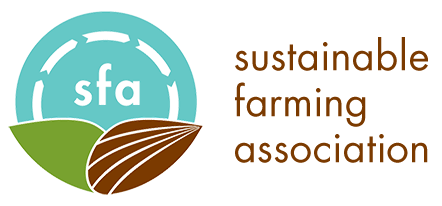Beyond Your Backyard: Good or Bad?
Good or bad? I’ve been asked this question a lot in my career. Is haying good or bad? Is grazing good or bad? Is fire good or bad for the prairie? The answer is always the same: a question. What time of year? How short are you haying? How often? How many animals? What kind? What’s your rotation? What season are you burning? How frequently? Are you leaving refugia? What’s your fire return interval?
 Nature is not so easily put into a box and rarely is there an answer that is black or white. There’s a complexity to it that is both frustrating and fascinating. One thing remains the same: each of these are tools. They are neither good nor bad. They have utility, but they also can be overused and cause unintended damage if not used cautiously with a well-thought-out approach that allows for adaptive management if something isn’t working or responding how we anticipated.
Nature is not so easily put into a box and rarely is there an answer that is black or white. There’s a complexity to it that is both frustrating and fascinating. One thing remains the same: each of these are tools. They are neither good nor bad. They have utility, but they also can be overused and cause unintended damage if not used cautiously with a well-thought-out approach that allows for adaptive management if something isn’t working or responding how we anticipated.
A prairie does not become a prairie by simply planting grass and grazing, burning, or haying. There’s nuance and multiple tools and approaches that can be used. My friend Henry recently told me he’s convinced the “P” in prairie actually stands for patience, which may be the most beneficial tool of all—allowing nature to do its thing on its own timeline.
It’s these questions and complexity that led DNR Invertebrate Ecologist Jessica Petersen and myself to start the Prairie Pod (a science podcast that’s fun, we promise). We wanted to dive deep and have conversations about what makes the prairie special: its unique parts and pieces, how it has shaped our world, and how our choices can help it to survive or die. We wanted to showcase the prairie partnership in Minnesota made up of landowners, land managers, scientists, and enthusiasts who are working to ensure this land isn’t just a piece of our rich natural heritage, but an emblem of our future.
We hope each episode helps people from the best prairie ecologists to my Aunt Becky discover the prairie and experience its many wonders. Science as it should be: for everyone. There’s jokes, random outbursts of song (sometimes I can’t help myself) and solid knowledge being dropped on every episode. DNR Nongame Biologist Mike Worland joined the charge last year as my new cohost. We have a brother-sister type camaraderie that makes the podcast fun and at times ridiculous in the best possible way. I learn new things every episode and I hope you will too!
I leave you for this week with these parting thoughts: we’re taught at an early age the value of a tree. How it helps us breathe, stores carbon and provides us with useful products like paper and wood. I wonder if the prairie ever gets jealous? Knowing it as I do, I imagine it doesn’t. But rather being the wise soul that it is, acknowledges there is no competition — we need both forests and prairies if we are to live in a healthy and whole Minnesota.
Even so, if we can do a little to help people understand that the prairie is storing 0.30 to 1.7 metric tons (661 to 3,748 pounds) of carbon per acre per year in its extensive roots, absorbing roughly nine inches of rainfall per hour without runoff, filtering and cleaning that same water, and also giving us clean air to breathe — well, that’s credit I’m sure the trees and forests won’t mind sharing. Those swaying grasses and wildflowers are doing far more than just existing – they are living so we can live in return.
Ready to learn more? Add to your Dirt Rich summer soundtrack with episodes of the Prairie Pod airing every Tuesday through July and August.
#prairietuesday #discovertheprairie

